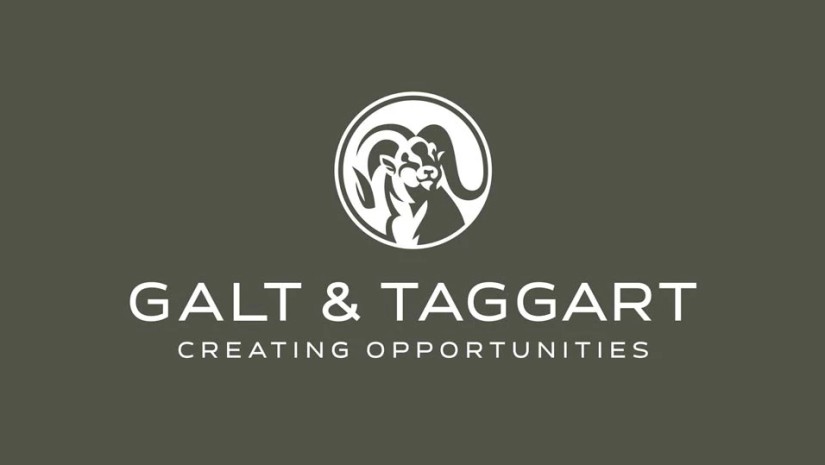Galt&Taggart published the Global Markets Weekly Update.
USA
US MARKET OVERVIEW:
Last week saw stock markets in the United States, Europe, and Japan reaching record highs following Nvidia's outstanding quarterly earnings report and robust guidance announced after Wednesday's closing bell. The company's AI chip demand surged, propelling its stock by over 16% and briefly pushing its valuation beyond $2 trillion. This strong performance not only boosted Nvidia but also uplifted the broader market.
Despite investors scaling back expectations for Federal Reserve rate cuts, typically a market headwind, the remarkable showing of Nvidia and other major tech companies overshadowed concerns about the Fed. Goldman Sachs economists anticipate a delay in rate cuts until June, revising their forecast to four reductions this year and next. JPMorgan rate strategists foresee elevated Treasury yields amid Fed policy uncertainty. Treasury 10-year yields were little changed at 4.32%.
Consequently, all three major market indices recorded gains for the week: the S&P 500 climbed 1.6%, the tech-heavy Nasdaq Composite advanced 1.4%, and the Dow Jones rose 1.3%.
CORPORATE NEWS:
NVDA:
• Earnings per share: $5.16 adjusted vs. $4.64 expected
• Record quarterly revenue of $22.1 billion, up 22% from Q3, up 265% from year ago vs. $20.62 billion expected
• Record full-year revenue of $60.9 billion, up 126%
Nvidia experienced an unprecedented surge in market value on Thursday up by 16%, gaining a staggering $276.65 billion, marking the largest one-day gain ever recorded for any company. This remarkable feat follows closely behind Meta's recent record one-day market-value increase of $204.49 billion. According to Dow Jones Market Data, Nvidia's current market capitalization stands at $1.963 trillion, surpassing both Amazon.com and Google-parent Alphabet. As a result, Nvidia now ranks as the third-largest U.S. company by market value, trailing only behind Microsoft and Apple. Nvidia's major clients, including Amazon.com Inc., Meta Platforms, Microsoft Corp., and Alphabet Inc.’s Google, collectively contribute to almost 40% of its revenue. They are fervently investing in AI computing hardware, driving Nvidia's sales growth.
REDDIT:
Reddit Inc. revealed its IPO plans through an S-1 filing, marking the first major tech IPO of the year, slated for a New York Stock Exchange listing in March. While exact terms were undisclosed, Wall Street expects the IPO to raise $500-$700 million, valuing Reddit at over $5 billion, a significant increase from its $10 billion valuation in 2021. With major investment banks like Morgan Stanley and Goldman Sachs on board, Reddit aims to leverage its AI capabilities and advertising potential, highlighted by a recent $60 million deal with Google. Notably, Sam Altman, CEO of OpenAI, holds a significant pre-IPO stake in Reddit, anticipating substantial gains post-IPO. Despite revenue growth, Reddit has yet to turn a profit, reporting a net loss of $90.8 million in 2023. With 73.1 million daily average users, Reddit boasts an engaged audience attractive to advertisers, targeting demographics not extensively active on other platforms. The IPO is expected to be a major test for VC-backed startups, with notable backers including Quiet Capital and Tencent. While Reddit's profitability remains a concern, its innovative strategies for monetization underscore its potential for future growth.
USA
LUNR:
Intuitive Machines' (LUNR) uncrewed spacecraft, Odysseus, made history by becoming the first commercial U.S. company to successfully land on the moon since Apollo 17 in 1972. The achievement, celebrated by NASA Administrator Bill Nelson as "a triumph for humanity," sent
shares soaring by 37% in after-hours trading on Thursday. Despite momentary communication loss during landing, the mission director confirmed equipment transmission from the moon's surface. Launched aboard a SpaceX rocket, Odysseus leads the way for commercial lunar exploration ahead of NASA's planned crewed mission in 2026. NASA Administrator Bill Nelson commended the collaboration between Intuitive Machines, SpaceX, and NASA, highlighting the mission's role in NASA's commercial payload program to reduce costs and enhance space access. Following the successful landing, Odysseus will conduct operations on the moon for about a week, carrying various scientific and commercial payloads, including materials from Columbia Sportswear and a sculpture by artist Jeff Koons.
THE WEEK AHEAD:
The upcoming economic calendar features upcoming data on new home sales, durable orders, and construction prices. Analysts anticipate that bond yields might rise if there's a resurgence in inflation expectations, spurred by the January CPI and PPI reports surpassing expectations. The highlight for inflation observers could be the unveiling of the core PCE figure on February 29, which is regarded as the Federal Reserve's preferred inflation measure and could impact interest rate expectations significantly.
Monday, February 26 - Workday (WDAY), Li Auto (LI), Domino's Pizza (DPZ), and Zoom Video (ZM).
Tuesday, February 27 - Lowe's (LOW), American Tower (AMT), AutoZone (AZO), and eBay (EBAY).
Wednesday, February 28 - Salesforce (CRM), Royal Bank of Canada (RY), Baidu (BIDU), HP (HPQ), and Snowflake (SNOW).
Thursday, February 29 - Anheuser-Busch InBev (BUD), Toronto-Dominion Bank (TD), Dell Technologies (DELL), and Autodesk (ADSK).
Friday, March 1 - Plug Power (PLUG) and fuboTV (FUBO).
Europe
Eurozone PMI stabilizing
In local currency terms, the pan-European STOXX Europe 600 Index climbed to a record level, ending the week 1.15% higher. The benchmark rose as stellar quarterly results from NVIDIA stoked a global rally and demand for technology stocks. France’s CAC 40 Index gained 2.56%, Italy’s FTSE MIB added 3.05%, and Germany’s DAX advanced 1.76%. The UK’s FTSE 100 Index was little changed, reflecting weakness in mining and energy stocks.
European government bond yields broadly rose as investors trimmed bets on the number of interest rate cuts this year after stronger-than-expected purchasing managers’ surveys.
Early PMI data for February suggested that the eurozone economy could be stabilizing, helped by a recovery in the services sector. A provisional estimate of the HCOB eurozone composite PMI for output rose to 48.9 from 47.9 in January, an eight-month high but still in contractionary territory. (PMI readings below 50 indicate that business activity shrank.) The composite PMI for Germany’s economic output declined for the eighth month in a row. Output likewise weakened in France. However, output in the rest of the eurozone expanded for a second month running.
Germany’s economy officially shrank in Q4
Separately, final data confirmed Germany’s economy contracted 0.3% in the fourth quarter. Government consumption fell sharply due to budget constraints, and gross fixed capital formation shrank as companies cut investment. Meanwhile, the German government sharply reduced its forecast for economic growth this year to 0.2% from 1.3%, citing weaker global demand, geopolitical uncertainty, and higher inflation.
UK PMI rises four months in a row; BoE’s Bailey “comfortable” with rate bets
In the UK, the composite PMI output index rose to 53.3 in February from 52.9 in January, accompanied by a solid improvement in customer demand.
Bank of England (BoE) Governor Andrew Bailey told a parliamentary committee that he was “comfortable” with investors betting on rate cuts this year, although he also asserted that the economy was “showing distinct signs of an upturn” after a recession last year. He added: "We do not endorse the market curve. We are not making a prediction of when or by how much [we will cut rates]. But...it's not unreasonable for the market to think that.”
Japan
STRONG MACHINERY ORDERS AND EXPORTS, BUT MANUFACTURING PMI DISAPPOINTS
In a shortened week, Japanese equities ended Thursday at a new all-time high, with the Nikkei 225 Index breaking the previous record set more than 30 years ago in December 1989. The broader TOPIX also finished at its highest level since February 1999, as Japan’s return to steady growth and corporate profitability both continued to underpin confidence. However, it was not all plain sailing, and it took a Thursday rally, ahead of the Emperor’s Birthday holiday, to snap a four-day losing streak.
In the fixed income market, 10-year Japanese government bond yields finished the week at 0.711%, down slightly from 0.725% the previous Friday.
On the economic front, early-week data showed that core machinery orders were up a seasonally adjusted 2.7% in December, having contracted 4.9% the previous month. This delivered a better-than-expected 0.7% annual decline in machine orders.
Japanese export data also came in strong, rising to a record high in January. Exports increased 11.9%, a second straight month of growth, allaying some fears about slowing global demand. With energy imports also lower, Japan’s trade deficit shrank to roughly half of what it was a year ago.
Later in the week, data from Japan’s manufacturing sector disappointed, with the latest purchasing managers’ survey indicating continuing contraction. PMI for this segment of the economy came in at 47.2, down from 48.0 in January. On the services side, PMI data also softened but remained in expansionary territory, easing from 53.1 in January to 52.5 in February.
COMPANY PROFITABILITY AND IMPROVING PRICE OUTLOOK UNDERPIN CONFIDENCE
Equities received a boost after Bank of Japan Governor Kazuo Ueda expressed confidence that moderate inflation was likely to continue as wages grow. Financial markets remained laser-focused on when the central bank will end its negative interest rate policy and break free from years of ultra-loose monetary policy.
China
MIXED SIGNALS FROM LUNAR NEW YEAR TOURISM DATA
Chinese equities rallied as recovery hopes rose following buoyant holiday spending during the prior week’s Lunar New Year holiday. The Shanghai Composite Index rose 4.85%, while the blue chip CSI 300 gained 3.71%. In Hong Kong, the benchmark Hang Seng Index advanced 2.36%, according to FactSet.
Tourism revenue over the weeklong Lunar New Year holiday surged 47% over the 2023 holiday and surpassed pre-pandemic levels, according to data from the Ministry of Culture and Tourism. Domestic trips rose 34% from last year, and international trips also increased. However, average spending per trip fell 9.5% from 2019, signaling lingering caution among consumers. Moreover, this year’s holiday lasted eight days, a day longer than the 2019 break.
PBOC ANNOUNCES SUPPORTIVE MEASURES
In monetary policy news, the People’s Bank of China (PBoC) injected RMB 500 billion into the banking system via its medium-term lending facility, compared with RMB 499 billion in maturing loans, and left the lending rate unchanged as expected. The operation was targeted at maintaining ample liquidity in the banking system, the central bank said in a statement.
The PBoC announced that the five-year loan prime rate was lowered by a bigger-than-expected 25 basis points to 3.95%, marking the largest cut since the reference rate was introduced in 2019. Lowering the five-year rate, a key gauge for mortgages, will reduce mortgage rates for homebuyers and aims to shore up demand in the troubled property sector. Policymakers left the one-year lending rate unchanged.
NEW HOME PRICES REGISTER SEVENTH MONTHLY DECLINE
New home prices in 70 cities fell 0.3% sequentially in January, marking the seventh monthly contraction, according to the statistics bureau.





















